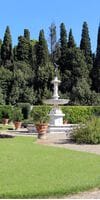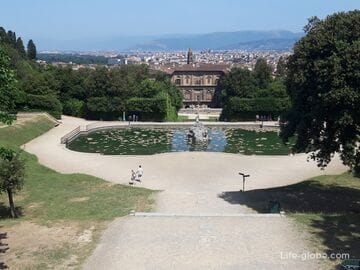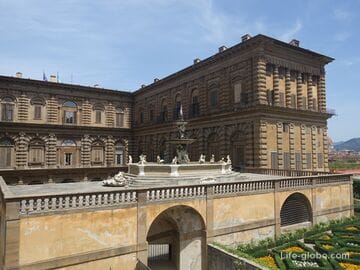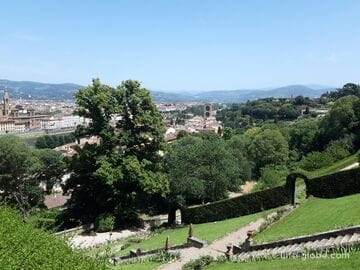The Medici Garden and Villa in Petraia (Giardino della Villa Medicea La Petraia), also known simply as Villa Petraia (Villa La Petraia) is a beautiful and famous villa with a historic garden of the Medici family, located in the hilly area of the Castello district, in the northwestern outskirts of Florence.
Villa La Petraia, together with the villa and garden of the Medici Castello (Giardino della Villa Medicea di Castello), are one of the most beautiful and significant villas in the vicinity of Florence.
The fortified Villa Petraia was one of the country residences and refuge of the Medici family, and the adjacent Italian garden with fountains with sculptures, located on a hill, offers panoramic views of Florence.
Today, the villa has rich interiors and decorations, and it, like the adjacent garden, can be visited.
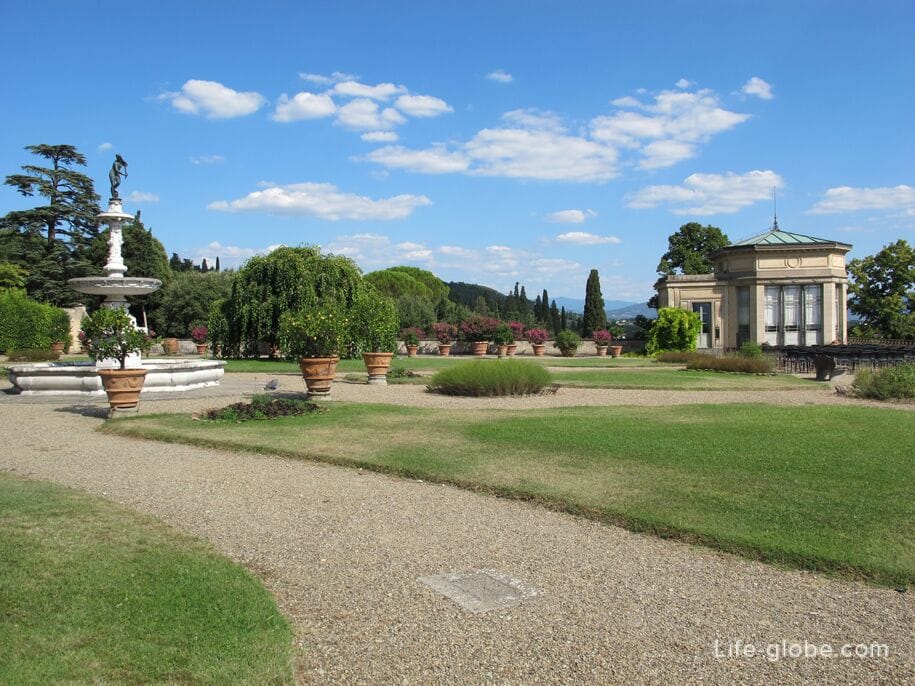
In 1364, Petraia's "palace" belonged to the Florentine noble Brunelleschi family, until in 1422 the Italian banker Palla Strozzi bought it, after which he expanded it at the expense of the adjacent lands.
In the first half of the sixteenth century, the villa became the property of Salutati, who in 1544 sold the villa to Cosimo I de' Medici, who, in turn, in 1568 transferred it to his son, Cardinal Ferdinando. From 1588 and over the next decade, extensive earthworks were carried out, which transformed the "rocky" nature of this place (hence the name "in Petraia", which means "full of stones") into an impressive sequence of terraces, above which towered the massive main building. Traditionally, the creation of this villa is attributed to the Italian architect Bernardo Buontalenti, although the only documented authenticity is the work of Raphael Pagni.
The villa served mainly as a private residence, but also as a hunting place, which explains the presence of service plants, not decorative ones, and the absence of statues and fountains initially.
The villa remained in the possession of the Medici family until their disappearance, after which it passed to the Grand Dukes of Habsburg-Lorraine. Leopold II laid out an English garden park in a romantic style to the north of the villa. Since 1860, the estate became the property of the House of Savoy, becoming one of the favorite residences of Victor Emmanuel II. At that time, the central courtyard of the villa was covered with a glass roof and an aviary was built. The villa was transferred to the Italian state in 1919 and is now a museum with frescoes and some original antique furniture.
From the ancient fortified villa of the fourteenth century, the central tower remained, which was transformed into a belvedere and around which the villa was expanded.
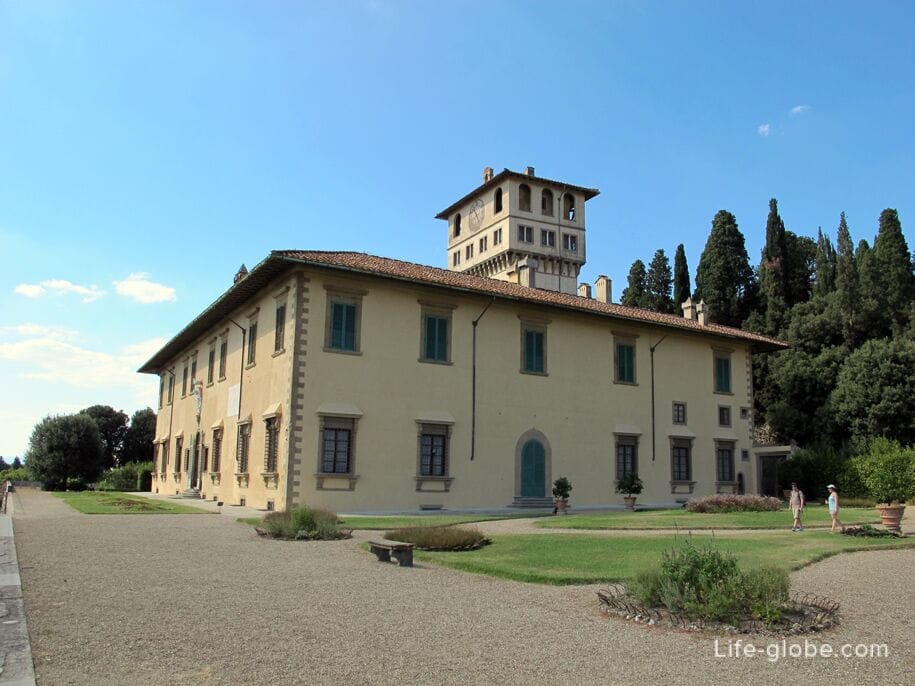
Interior of Villa Petraia
The lobby of the villa leads to a central roofed courtyard.
The roof, consisting of iron and glass, as well as a large amethyst crystal chandelier and floor date back to 1872, when the courtyard was transformed into the Salon delle Feste.
The walls of the courtyard are covered with frescoes. The two main walls depict scenes of the deeds of Gottfried of Bouillon at the capture of Jerusalem, painted by Cosimo Daddi and dating from about 1590. On the other hand, under the side arcades there is a cycle of frescoes by Fasti Medici, which is a masterpiece by the Italian artist Volterrano, painted between 1637 and 1646.


Within the walls of Villa Petraia are:
- a large dining room, the so-called Tapestry Room or Red Room, where some 17th-century Flemish tapestries are housed;
- Music room, named after the large piano harmonium, built in Naples in 1868. The walls of the room are covered with French velvet, and the French gilded bronze clock, dated 1770, is of particular value;
- The Royal studio, which has a French-made parade of crimson velvet on a yellow background laminated with gold. Antique furniture goes back, first of all, to the Empire style, characteristic of the first decade of the nineteenth century;
- The new chapel, named to distinguish it from the old one, located on the ground floor of the villa, was once the bedroom of the most religious Grand Duke Cosimo III. There were frescoes on religious themes painted by Pierre Dandini and Rinaldo Botti around 1696, which a century later were considered more suitable for a place of prayer; after the room was consecrated and an altar was built into it, on top of which today there is a copy of the "Holy Family" by Andrea del Sarto;
- two rooms dedicated to sculptures removed for conservation reasons from the villa park and from the garden of the nearby Villa Castello;
- on the ground floor, late eighteenth-century Chinese watercolors with figures of everyday work, once very popular when the art form was called chinoiserie, are notable. The most valuable painting is "View of the port of Canton", made in gouache on a silk roller.;
- studio furnished with nineteenth-century furniture made of dark mahogany;
- the Empire room, where the furniture of the Napoleonic period is located;
- Blue room decorated with blue silk and furnished with rococo furniture;
- a room in Florence, in which the sculpture Venus by Giambologna from 1570-1572, which decorated the fountain in the garden, is exhibited (now there is a copy in the garden);
- the bedroom where Rosa Vercellana slept (she was first the mistress and then the morganatic wife of King Vittorio Emanuele II of Savoy of Italy), with a canopy of the first half of the nineteenth century and other furniture of the same era. On the walls there is a tapestry of blue silk made in France in 1865. In the adjoining dressing room there is a series of eighteenth-century pastel portraits attributed to the artist Giovanna Fratellini;
- The yellow drawing room, which was a royal room with early nineteenth-century furniture and eighteenth-century objects;
- The Green Drawing Room, where two paintings by the painter Matteo Rosselli, painted in 1624 and part of a larger series commissioned by Cardinal Carlo de' Medici for the San Marco Casino in Florence, are kept. Other works from this series are in the adjacent game room, furnished by Lorraine between 1853 and 1861 with sofas, armchairs and chintz, as well as a billiard table;
- The Red Living Room, which houses several portraits by artists Giusto Sustermans, Henri and Charles Bobrunov, as well as the "Bacchanal" by Ignazio Hagford;
- An old chapel decorated with "Stories of Saints and the Life of Christ" by Bernardino Pochchetti; and the vault is decorated with "The Glory of the Holy Spirit between angels and lodges" by Cosimo Daddi 1589-1594. On the altar is a copy of the "Madonna of the Attack" by Raffaello Sanzio;
- The eastern loggia, where two of the oldest and most valuable pieces of furniture of the villa have been preserved: two countertops inlaid in the Baroque style of 1686;
- a dining room furnished with rather simple furniture, under which a carpet documenting the Florentine production of this skill, signed and dated by Girolamo Podesta, 1860, is especially valuable.
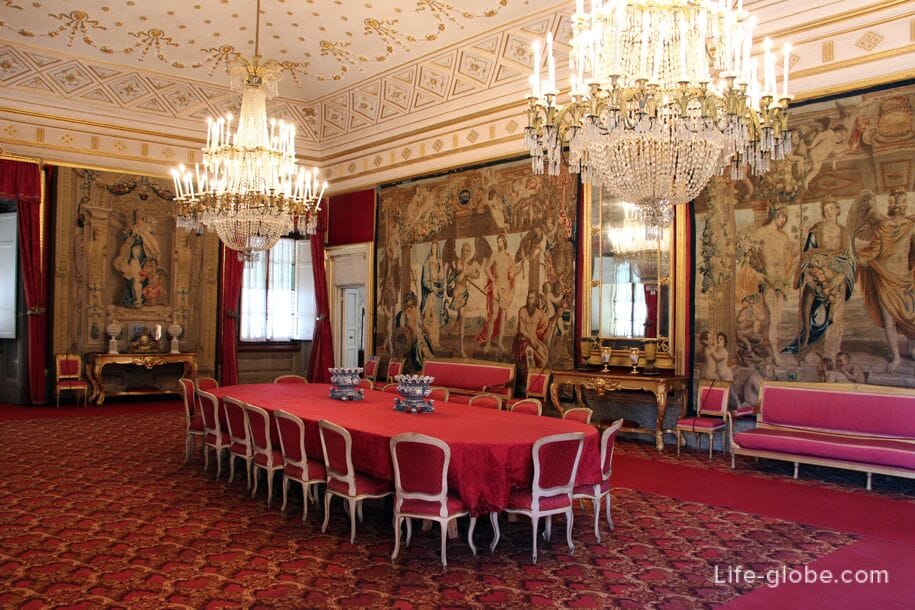
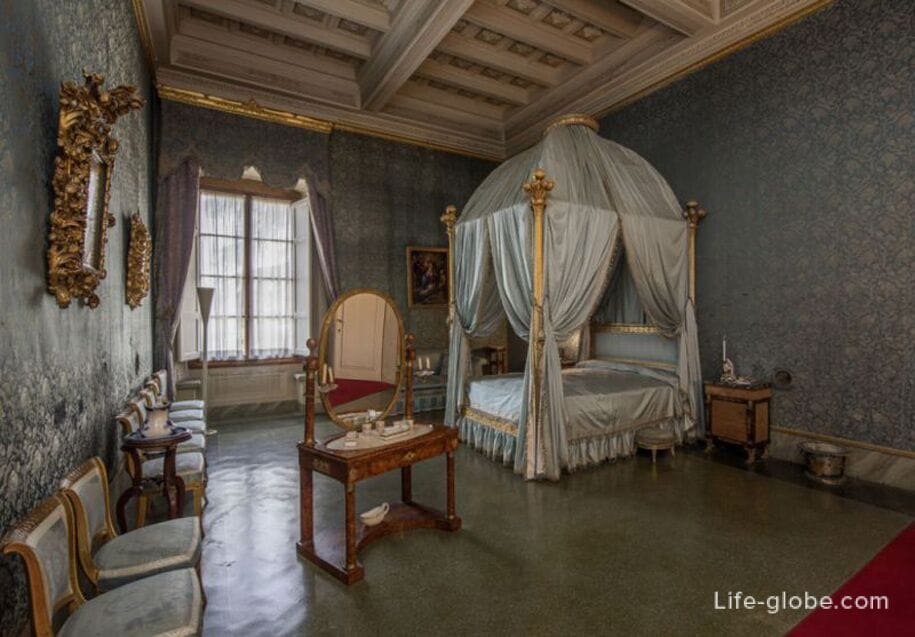
Gardens of Villa Petraia
Villa Petraia is surrounded by a green area, where in front of the villa there is an Italian garden with views of Florence, and behind there is an English park, decorated in a romantic style characteristic of the early 1800s.
The Italian garden is divided into three levels, thanks to the uneven slope of the hill. The highest terrace is located on the floor of the villa, which offers a good view of the garden itself and Florence.
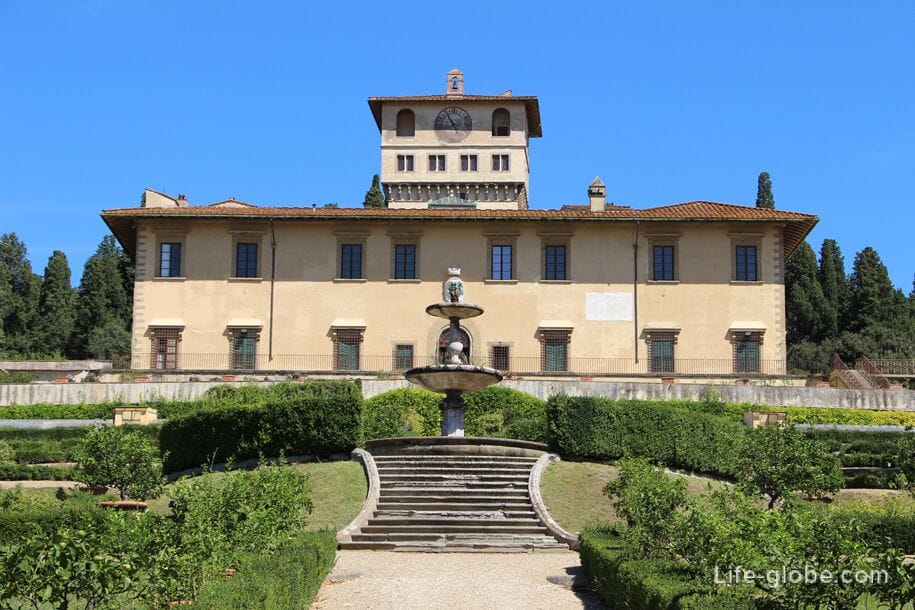
The gardens below the level: the one to the east is called the statuette meadow; and the one to the west is the Piano di Ponente or chestnut meadow.
In the center of the eastern garden is the Fiorenza fountain by Tribolo and Pierino da Vinci from 1538-1547, on top of which was placed the sculpture Venus by Giambologna (copies of the originals are kept in the villa).
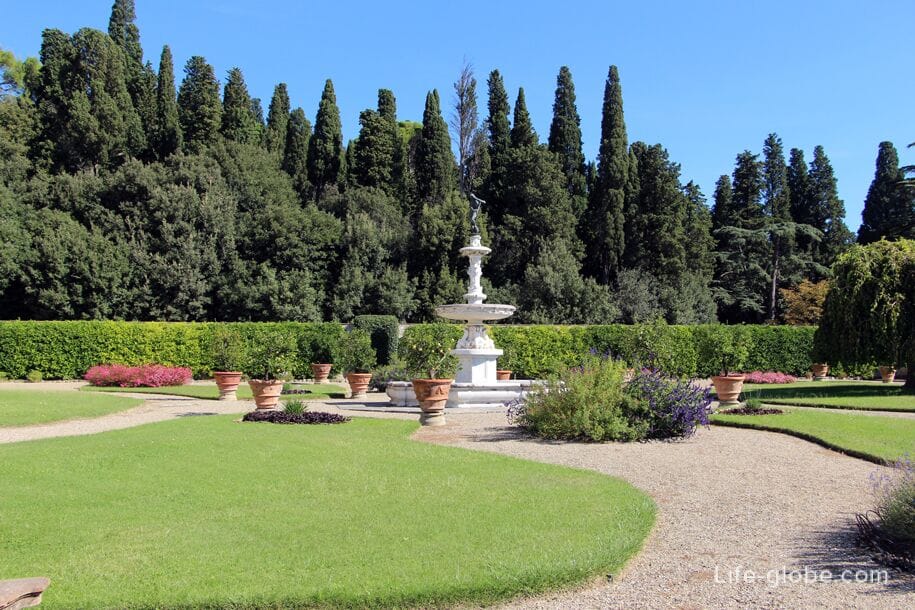
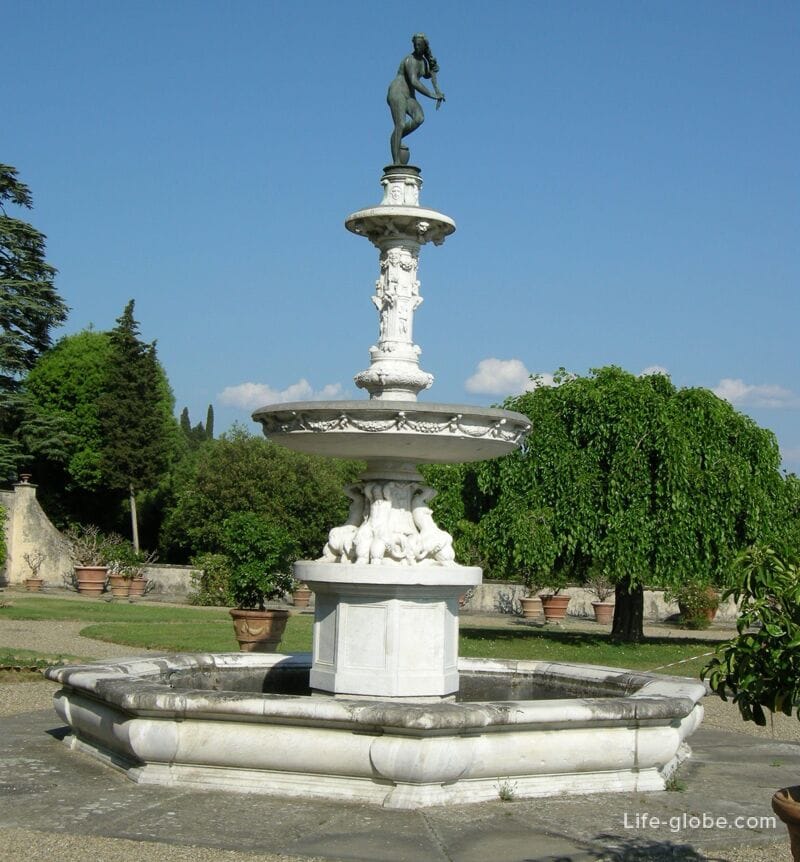
Below there is a garden with cedars, but originally chestnuts grew here.
Also in the lower level of the garden is a parterre of boxwood hedges and an 18th-century fountain topped with a bronze statue of Neptune.
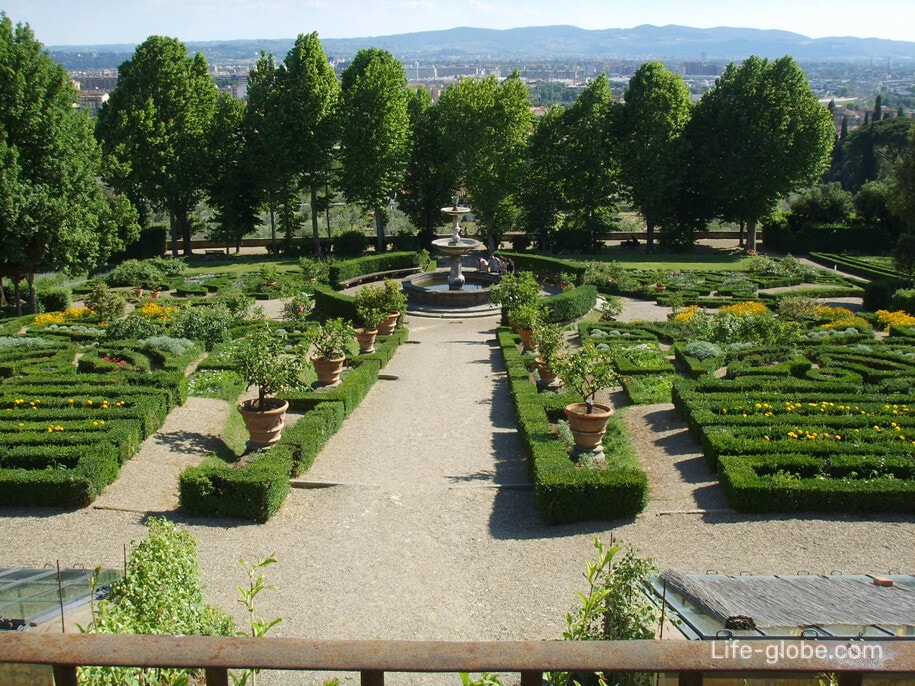

Practical information
Visiting the villa and garden is free, but on certain days and hours. The villa can be visited as part of an excursion.
Exact information about visiting the villa and the Petraia garden, opening hours, tickets (if any), etc., we recommend checking on the official website: firenze-villa-medicea-della-petraia.
The address of the villa and garden of Petraia: Via della Petraia, 40, 50141 Firenze FI, Italy.
The coordinates of the Petraia Villa and Garden are: 43°49'08.3"N 11°14'12.0"E (43.818967, 11.236653).
All accommodation facilities in Florence (hotels, apartments, guest houses, etc.), including in the historical center of the city and more remotely from it, can be viewed and booked here




